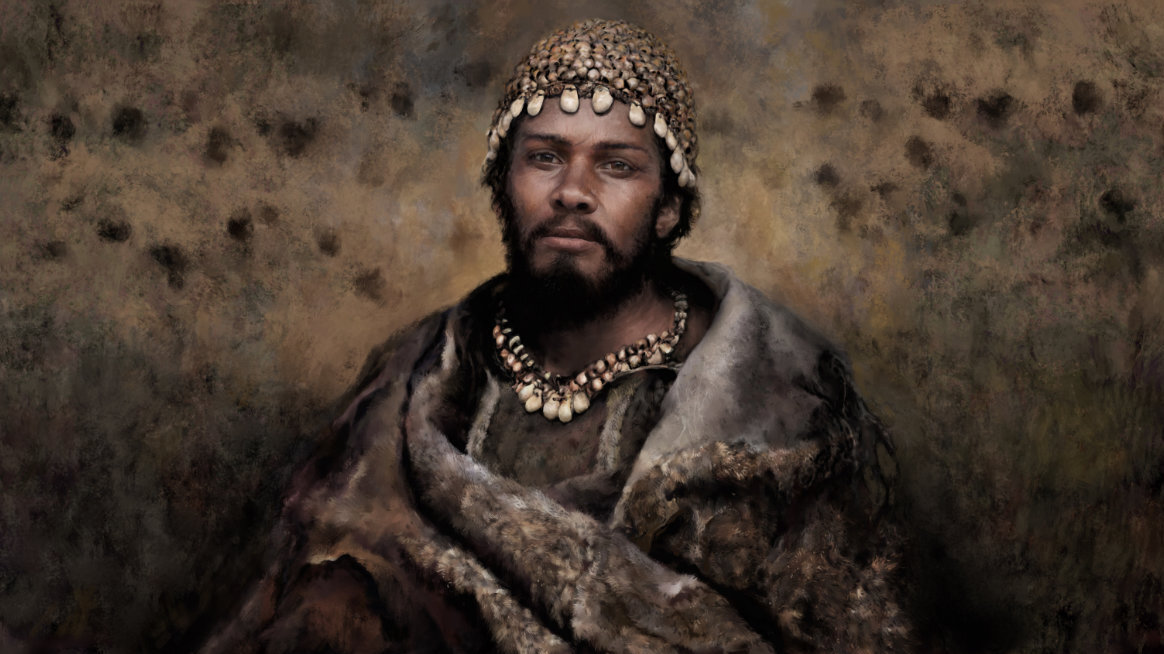The team analyzed the genomes of a total of 356 prehistoric individuals from different archaeological cultures – including new genome datasets of 116 individuals from 14 different European and Central Asian countries. About 45,000 years ago, modern humans began to spread across Eurasia. However, the first modern humans of Europe are not the genetic ancestors of later populations, as has recently been shown.
The study now focused on people who are considered at least in part to be the ancestors of today’s people of western Eurasia: They lived in the period between 35,000 and 5,000 years ago, including the coldest phase of the last ice age around 25,000 years ago the »last glacial maximum (LGM)«.
Climate refuge or dead end?
Surprisingly, the research team found that the people of the Gravettian culture, which was widespread on the European continent 32,000 to 24,000 years ago, were not closely related to each other. They shared a common archaeological culture: they used similar weapons and produced similar carvings decorated with animal faces. Genetically, however, the populations in the west and south-west (modern-day France and Iberia) differed from the contemporaneous populations in central and southern Europe (modern-day Czechia and Italy).
Thus, the gene pool of the hunter-gatherers of this period from the west can be found continuously for at least 20,000 years: their descendants, who are assigned to the Solutrean and Magdalenian cultures, stayed in southwestern Europe during the cold maximum and later spread north and east over Europe.
“With these finds, we can for the first time directly support the thesis that during the coldest phase of the last ice age, people sought refuge in south-western Europe, which offered more favorable climatic conditions,” says lead author Cosimo Posth.
So far, the Italian peninsula has been considered another retreat for people during the LGM. However, the research team found no evidence for this thesis, on the contrary: the hunters and gatherers of the Gravettian culture living in central and southern Europe can no longer be traced genetically after the cold maximum and are therefore considered extinct. Instead, people with a new gene pool settled there. “As we could see, the individuals living there, which are associated with a later culture (the Epigravettians), are genetically very different from the previous inhabitants of the Italian peninsula,” says co-author He Yu. “These people probably came to northern Italy from the Balkans around the time of the glacial maximum and spread to Sicily.”
Exchange of the gene pool
The analyzed genomes also show that the descendants of these early inhabitants of the Italian peninsula then spread across Europe around 14,000 years ago, displacing the groups associated with the Magdalenian culture. The research team speaks of a large genetic exchange. The reason may also have been climatic changes, to which people reacted by migrating: »Back then, the climate warmed up significantly in a short time and forests spread throughout Europe. This may have been a reason for people from the south to expand their living space. The earlier inhabitants, on the other hand, could have been displaced as their habitat, the mammoth steppe, dwindled,” says Johannes Krause, senior author of the study.
The findings further show that there was no genetic exchange between the hunter-gatherers of Western Europe and their contemporaries in Eastern Europe for more than 6,000 years. Encounters between people from the Central European continent and the Eastern European area (today’s Baltic States and along the Volga) can only be proven again for the period 8,000 years before today. “At that time, groups of hunter-gatherers of different appearances mingled there: they didn’t have the same skin and eye color, and they also differed in other characteristics,” says He Yu.
During this time, agriculture and a sedentary lifestyle finally spread from Anatolia to Europe. “It is possible that the immigration of the early farmers triggered a final retreat of hunter-gatherers to the northern edge of Europe – and at the same time a genetic mixing between the two groups began that lasted almost 3,000 years,” says Krause.
“The data we were able to obtain in this study give us an unprecedented detailed insight into the developments and encounters of West Eurasian hunter-gatherer groups,” summarizes Posth. “Further interdisciplinary research will clarify which processes were responsible for the exchange of entire Ice Age populations.”
